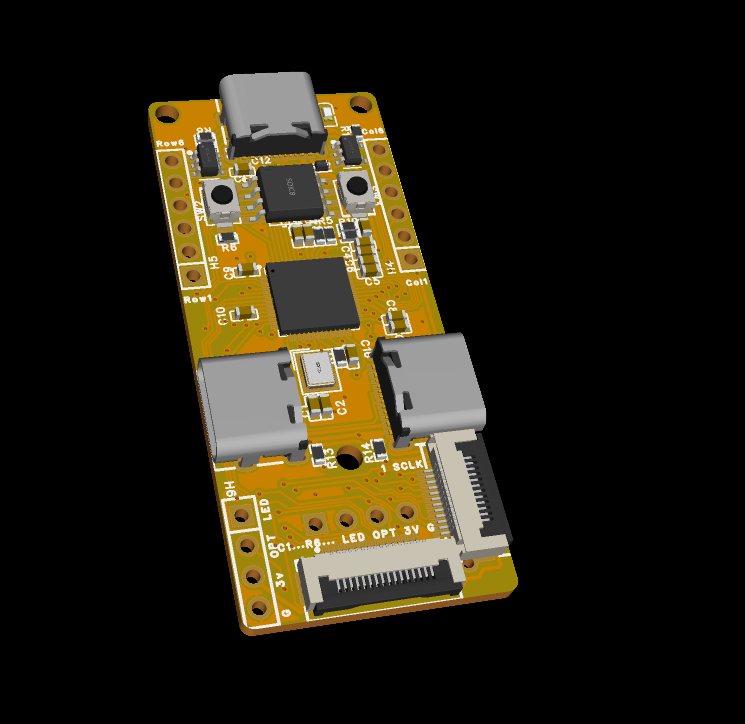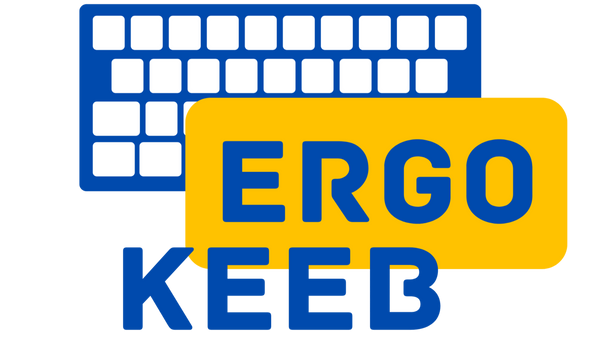
ErgoKeeb split keyboard system
Share
As a passionate enthusiast in the realm of custom mechanical keyboards, I have long admired the creativity and ergonomics afforded by split keyboard designs. These layouts, such as the Corne, Lily58, Sofle, and Totem, offer unparalleled comfort for extended typing sessions. However, the integration of microcontrollers (MCUs) and peripherals often introduces complexities that hinder accessibility for DIY builders. Today, I am excited to share the early stages of a project aimed at addressing these challenges: a modular keyboard system designed for customization.
Project Overview
At the core of this initiative lies the development of two specialized MCUs tailored for split keyboard applications. The wired variant leverages the RP2040 microcontroller, renowned for its high performance and ease of programming. Complementing this is the wireless counterpart, built around the nRF52840, which enables Bluetooth connectivity for untethered operation. To ensure broad compatibility, I plan to design some PCB for popular keyboard layouts, including Corne, Lily58, the Sofle, and Totem. These PCBs are optimized to interface directly with the custom MCUs, while also accommodating established alternatives such as the ProMicro for wired setups and the Nice Nano for wireless ones.
This modular architecture decouples the MCU from the keyboard matrix, allowing users to select the most suitable controller without redesigning the entire board.
Key Features
The system's design emphasizes modularity and extensibility, drawing from modelized components that abstract the MCU, pointer devices, and keyboard layouts. This approach facilitates rapid iteration during prototyping. Notable features include:
- Dual MCU Support: A single keyboard layout can accommodate two MCUs simultaneously—one wired and one wireless—enabling hybrid operation modes. This flexibility allows seamless switching between tethered reliability and cordless freedom.
- Flexible Interconnects: Flexible printed circuit (FPC) connectors link the keyboard layout board (housing the switches and keycaps) to the MCU. This separation not only simplifies assembly but also permits effortless swapping of MCUs, fostering reusability across projects.
- Integrated Pointer Functionality: Built-in provisions for pointer devices, such as trackballs or trackpads, are embedded directly into the MCU design. This eliminates the need for external modules, streamlining the user experience in pointing-heavy workflows.
- Optimized Matrix Configuration: Each MCU incorporates a dedicated 6x6 row-column matrix per side, providing ample capacity for standard split layouts while reserving pins for advanced features like RGB underlighting or additional I/O.
These elements collectively reduce wiring complexity and enhance signal integrity, as validated through initial schematic simulations and breadboard tests.
Guiding Aims
Foremost, it seeks to create a "keyboard-friendly" MCU that prioritizes intuitive pinouts and firmware compatibility with open-source ecosystems like QMK and ZMK. By minimizing soldering requirements—through plug-and-play FPC connections—the system democratizes prototyping, empowering novices and experts alike to experiment without specialized tools.
A key objective is MCU reusability: once fabricated, a single controller can migrate between layouts, reducing waste and accelerating design cycles. Finally, the dual-mode capability underscores a vision of versatility, where users can configure their keyboard for office productivity (wired stability) or mobile use (wireless portability).
Prototyping Progress and Next Steps
Currently, the project remains in the prototyping phase, with initial PCB spins undergoing assembly and firmware flashing. Challenges such as FPC alignment tolerances and power management for dual-MCU setups are being refined through iterative testing. Preliminary results are promising, with successful matrix detection on Corne and Lily58 mockups.
I invite fellow builders, developers, and enthusiasts to follow this journey via updates on my GitHub repository (link forthcoming) or community forums. Feedback on layout priorities or feature requests would be invaluable as we transition toward beta releases. Together, we can redefine what it means to craft a truly adaptable split keyboard.
In an era of bespoke computing, this modular system represents not just an engineering endeavor, but a step toward empowering creators everywhere. Stay tuned for deeper dives into schematics and build guides in the coming months.


